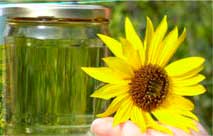Pelletisation Improving biomass properties Europe
Densification by means of pelletisation is considered to be a proven technology to improve biomass properties for its conversion into heat and power. Over the last few years the installed pellet production capacity in Europe has increased significantly and currently amounts 4.5 to 5 Mton annually. The pellet production in Northern America was approximately 1.2 Mton in 2004 and is expected to increase to 1.5 Mton in 2005 (Bioenergy, 2004). Such numbers indicate that the biopellets market is becoming quite mature with serious outlets in the domestic market (heating) and the energy market (heat and power). Although a relatively small volume of biopellets (or wood pellets) is produced in the Netherlands, the Dutch energy sector is consuming a considerable amount through ??-firing in coal-fired power stations. In fact, biopellets are a major sustainable fuel to replace coal. This must be approximately 6 Mton/a of coal in 2008-2010, according to the policy agreement between the Dutch government and the Dutch energy sector.
Biopellets are mainly attractive for power stations since they are composed of small particles. Therefore they can be readily crushed in coal mills and the resulting particles can be conveyed to the pulverised fuel burners just like coal powder. This is not the case for biomass of larger particle size (>1 mm) so that additional pretreatment is required. Nevertheless, biopellets are not free of drawbacks: (1) high production costs are involved (2) power stations still need to make serious investments in their logistic infrastructure (especially because biopellets are vulnerable to water) and (3) they only are produced economically from a narrow feedstock range. ECN has introduced an alternative process for the production of biopellets from a wide range of biomass feedstock to yield a superior product against lower overall costs. The process is based on a combination of torrefaction and pelletisation and is called the TOP process for the production of TOP pellets. The TOP process integrates the advantages of both processes with respect to the fuel quality of the biopellet. This is mainly the high calorific value, hydrophobic nature and good grindability through torrefaction and the high density through pelletisation. But not only the product quality is improved, also synergy effects in production are foreseen when both processes are combined. Adding torrefaction technology to conventional pelletisation leads to additional investments, but it also decreases the operational and investment costs of the unit operations involved with pelletisation. Initial desk studies done on the TOP process revealed that the total production costs do not increase necessarily, whilst the superior biopellets quality reduces the costs of transportation and processing at the power station.
Any copying and distributing the material of Ukrainian Biofuel Portal
without active hyperlink is stricly prohibited !
Link to this news: Pelletisation Improving biomass properties Europe
Copy & Paste This Code to your website:
Views: 5028 Added: 25-06-2008
Average Rating:
Pelletisation Improving biomass properties Europe







